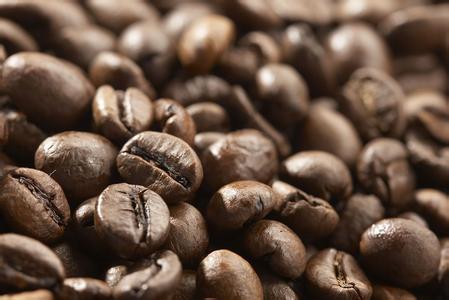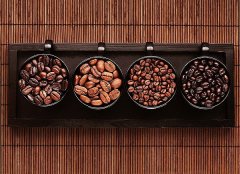Hawaii's 12 Best Coffee Places

Hawaii (Hawaii) after nearly two centuries of efforts to grow coffee, the term Kona is almost synonymous with "quality". Hawaii has superior geographical conditions for growing coffee, but historically, the road to growing coffee has been rugged since coffee trees were first introduced to the island in 1825. Even today, factors beyond human control tend to have an impact on the harvest in a coffee-growing area as successful as Hawaii.
The origin of coffee in Hawaii:
Hawaii, which spans latitudes 19 to 22 degrees, south of the Tropic of Cancer, the trade-wind-blown Hawaiian Islands, is a perfect coffee-growing area. The 50th state of the United States, 2400 miles from the west coast of the United States, is the only state in the United States that produces coffee. Hawaii's coffee is also internationally renowned as one of the best coffee in the world.
Most coffee is grown on the slopes of MaunaLoa. Mauna Loa was originally a volcano located in the western part of the Kona region on the island of Hawaii. The coffee producing area is about 30 kilometers long and its growing areas are mainly concentrated in the north and south of the area. Coffee trees are planted in relatively desolate areas, but their soil is fertile and contains volcanic ash.
The most famous coffee bean and coffee producing area in Hawaii is Kona, which is located in the southwest of the Big Island, 20 miles long and 2 miles wide, covering the slopes of Hualalai and Mauna Loa. Only coffee beans grown in this area and subject to the most stringent certification standards can be sold under the trademark "Kona". Today, about 100 farms have produced coffee beans that meet these standards, and more and more farms are expected to follow suit in the future.
Although Hawaii is often affected by tornadoes, the climatic conditions are very suitable for the coffee industry. There is plenty of rain and sunshine here, and there is no worry of frost. In addition, there is a strange natural phenomenon called free shade (freeshade). On most days, at about two o'clock in the afternoon, white clouds appear in the sky, providing the necessary shade for the coffee trees. In fact, it is such superior natural conditions that make the Arabian coffee in the Kona region produce more coffee than any other plantation in the world and maintain high quality. For example, 560 kilograms of coffee per hectare are produced in Latin America and 2240 kilograms per hectare in Kona. Only about 1400 hectares produce Kona coffee.
Coffee trees are grown commercially on all the islands of Hawaii, but at present, the Big Island has the largest number of coffee farms, about 650, but these coffee farms are relatively small, adding up to less than 2000 acres of plantation woodland, while only 25 coffee farms are operating on the islands of Maui, Molokai, Oahu and Kauai. However, the coffee plantations in these places are much larger than those on the big island, and the total output is more than three times that of the big island coffee garden. Surprisingly, Kauai Island has the largest coffee-growing area of any island, with more than 4000 acres, but all are managed by the same operator, while Molokai Island has only 550 acres of coffee-growing land, with even fewer Maui and Oahu. Most Hawaiian coffee farmers still pick fresh coffee cherries to sell today, but in recent years more and more people are committed to adding value to their coffee bean products, so they mostly go to their own post-processing, drying, grinding and baking their own coffee beans.
The characteristics of Hawaiian coffee:
Kona coffee beans from Hawaii have the perfect appearance. Their fruit is extraordinarily full and shiny. The taste of coffee is rich and aromatic, with cinnamon flavor, and the acidity is well balanced.
The best Kona coffee is divided into three grades: ExtraFancy, Fancy and NumberOne. This third-class coffee is produced on manors and under natural conditions. Most of the coffee that calls itself "Kona" now contains less than 5% of the real Hawaiian Kona coffee. Another good Hawaiian coffee can be found in the United States-Hawaiian Kaj Farm Coffee (KaiFarms). Real Kona coffee is indeed a treasure in the world and is not easy to find.
Flavor: smooth, fragrant, with attractive nutty aromas
Suggested baking method: mild to moderate baking
★★★: excellent
The market for Hawaiian coffee:
Hawaiian coffee is the only top variety produced in 50 states in the United States, and the United States is naturally its largest market. The coffee quality standards set by coffee farmers in Hawaii are very strict and are updated every year. Of all coffee producers, Hawaii has the strictest management of the coffee industry and the highest labor costs. With the best level of investment.
Important Notice :
前街咖啡 FrontStreet Coffee has moved to new addredd:
FrontStreet Coffee Address: 315,Donghua East Road,GuangZhou
Tel:020 38364473
- Prev

Twelve famous high-quality coffee producers in Costa Rica
Costa Rican coffee origin: high-quality Costa Rican coffee is called extra hard beans, this kind of coffee can grow at an altitude of more than 1500 meters. Altitude has always been a problem for coffee growers. The higher the altitude, the better the coffee beans, not only because the higher altitude can increase the acidity of the coffee beans and thus increase the flavor, but also because the night temperature at the higher altitude is lower.
- Next

Twelve famous high-quality coffee producing areas in Kenya
In 1878, the British landed coffee in Africa and set up a coffee plantation in Kenya in the 19th century, when Ethiopian coffee drinks were imported to Kenya through southern Yemen. But it was not until the early 20 th century that the Bourbon Coffee Tree was saint. The Austin Mission (St.AustinMission) was introduced. Origin of coffee in Kenya: most coffee in Kenya (Kenya) grows at 1500 above sea level
Related
- Guji coffee producing area of Guji, Ethiopia: Humbela, Shakiso, Wulaga
- What is the most expensive variety of Qiloso in BOP multi-variety group?
- How to store the coffee beans bought home?
- Why are Yemeni coffee beans so rare now?
- Ethiopian Sidamo all Red Fruit Sun Sun Santa Vini Coffee beans
- SOE is mostly sour? What does it mean? Is it a single bean? what's the difference between it and Italian blending?
- Is Italian coffee beans suitable for making hand-brewed coffee?
- How to choose coffee beans when making cold coffee? What kind of coffee beans are suitable for making cold coffee?
- Just entered the pit to make coffee, what kind of coffee beans should be chosen?
- Can only Japan buy real Blue Mountain Coffee? What are authentic Jamaican Blue Mountain coffee beans?

